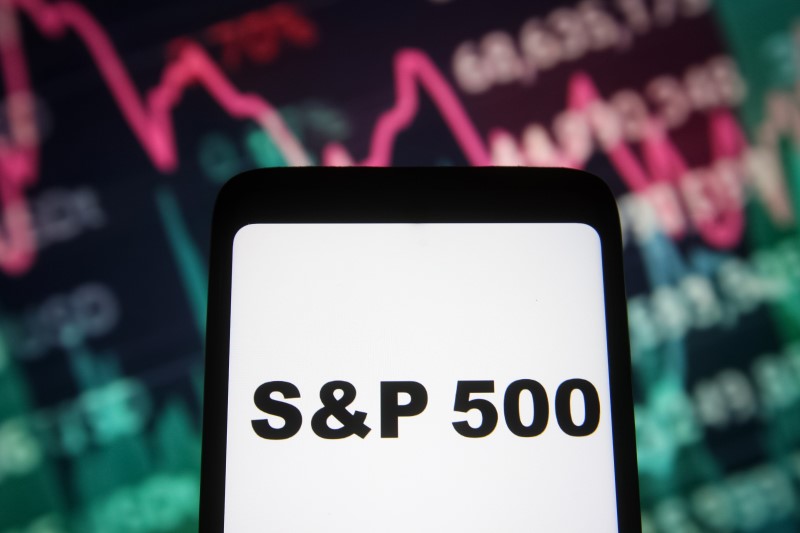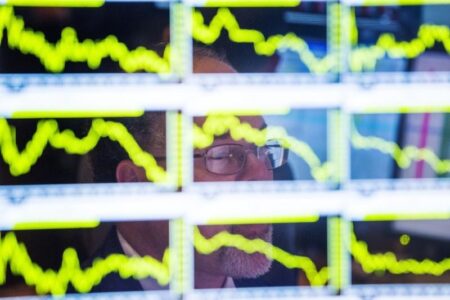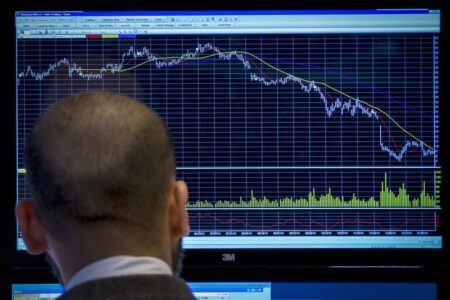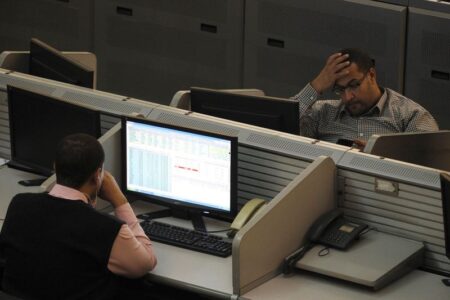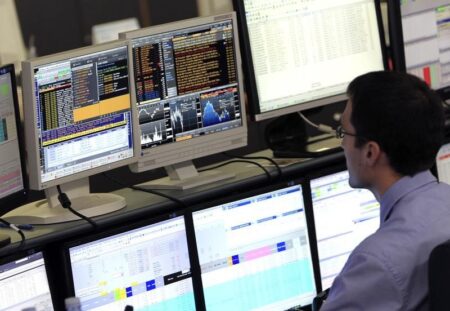By Marc Jones
LONDON (Reuters) – World stocks were on the brink of an all-time high and the euro rose on Thursday after the European Central Bank cut interest rates for the first time in nearly five years, but also signalled that follow-up moves could take a while.
ECB policymakers duly delivered their widely-flagged quarter point cut to 3.75%, but markets were left feeling a little deflated after the bank also said it now did not expect inflation to fall back to target until 2026.
It was enough to snip the pan-European ‘s gains in half to a more modest 0.4%, while the euro inched up to almost $1.0890 against the dollar and government bond yields – which reflect borrowing costs and move inverse to price – ticked up too.
MSCI’s 47-country main world index also backpedaled slightly, having been within a single point of a seemingly inevitable new peak, and record high Wall Street prices also flickered red in the futures markets.
“The focus for markets (now) is whether they will find room to cut in September,” Saltmarsh Economics’ Marchel Alexandrovich said.
He said it wasn’t a surprise that inflation forecasts had been revised up. “Inflation is proving sticky and that makes it difficult.”
Sentiment beforehand had almost reached frenzy stage again. Wall Street’s and Nasdaq had both set records on Wednesday after a now $3-trillion AI juggernaut Nvidia (NASDAQ:) swept past Apple (NASDAQ:) to become the world’s second most valuable company, behind Microsoft (NASDAQ:).
The euro’s gain added to its 2% rise over the last month to reach just shy of $1.0880, although most traders were sitting on their hands, with President Christine Lagarde stressing at the start of her post-meeting press conference: “We are not precommitting to a particular rate path”.
All 82 economists polled by Reuters had expected the Frankfurt-based central bank to trim its key rate from the record high 4.0% level it has been at since September, but what it does now is clearly a subject of much debate.
EU elections happen in the coming days and stronger-than-expected data over the last few weeks, plus Thursday’s increase in the ECB’s in-house inflation forecasts, have raised doubts about how many more cuts will be justified this year.
Euro zone inflation rose more than predicted in May, fueled by price growth in the services sector, which some policymakers single out as especially relevant because it reflects domestic demand.
This was likely to mirror larger-than-expected increases in wages in the first quarter of the year, which boosted consumers’ battered disposable income after years of below-inflation pay hikes.
“This was a cautious cut,” Samuel Zief, head of global FX strategy at J.P. Morgan Private Bank said. “We currently think that September could be next. But (there is) no reason to expect significant reductions any time soon with growth actually picking up steam of late.”
GOLDILOCKS STORY
The Bank of Canada pipped the ECB to being the first G7 country to cut rates in this cycle on Wednesday. The U.S. Federal Reserve meets next week, although is not expected to move until September.
By contrast, the debate at the Bank of Japan, which meets the week after, will be on if, and when, to raise rates.
Canada’s dollar trimmed some of the losses from its post-cut dip on Thursday to leave it at C$1.37 per U.S. dollar.
In the bond markets, Germany’s 2-year government bond yield, which is sensitive to policy rate expectations, was up nearly 6 bp at 3.033%. It hit 3.125% on Friday last week, its highest since mid-November.
Benchmark 10-year U.S. Treasury yields were a touch higher at just over 4%, although that was still near their lowest in two months, after data this week hinted that the U.S. labour market is finally cooling.
That included private U.S. payrolls on Wednesday and a report on Tuesday that showed job openings fell in April to the lowest in more than three years.
Markets are now pricing nearly two quarter-point Fed cuts again this year, with a September move seen as a 68% chance compared to 47.5% last week.
“We’re still in the Goldilocks range, so bad economic news has been good for equities, as Fed rate cuts are back on the table,” said Ben Bennett, Asia-Pacific investment strategist at Legal and General Investment Management.
Investor attention will soon turn to the U.S. nonfarm payroll report for May on Friday, with a Reuters poll of economists expecting it to have risen by 185,000 jobs.
“We need that to be around 100-150k to maintain the Goldilocks narrative,” Bennett said. “Much higher than that and yields could move back up, but if we get zero or negative, then we could be talking about a hard landing again.”
In commodities, futures rose as much as 0.5% to $78.50 a barrel, while U.S. West Texas Intermediate crude futures rose 0.4% to $74.19. [O/R]
Gold barely budged at $2,360 per ounce after a 1% rise previously, while cryptocurrency bitcoin was shuffling back towards March’s record high again at $70,985. [GOL/]
Read the full article here







